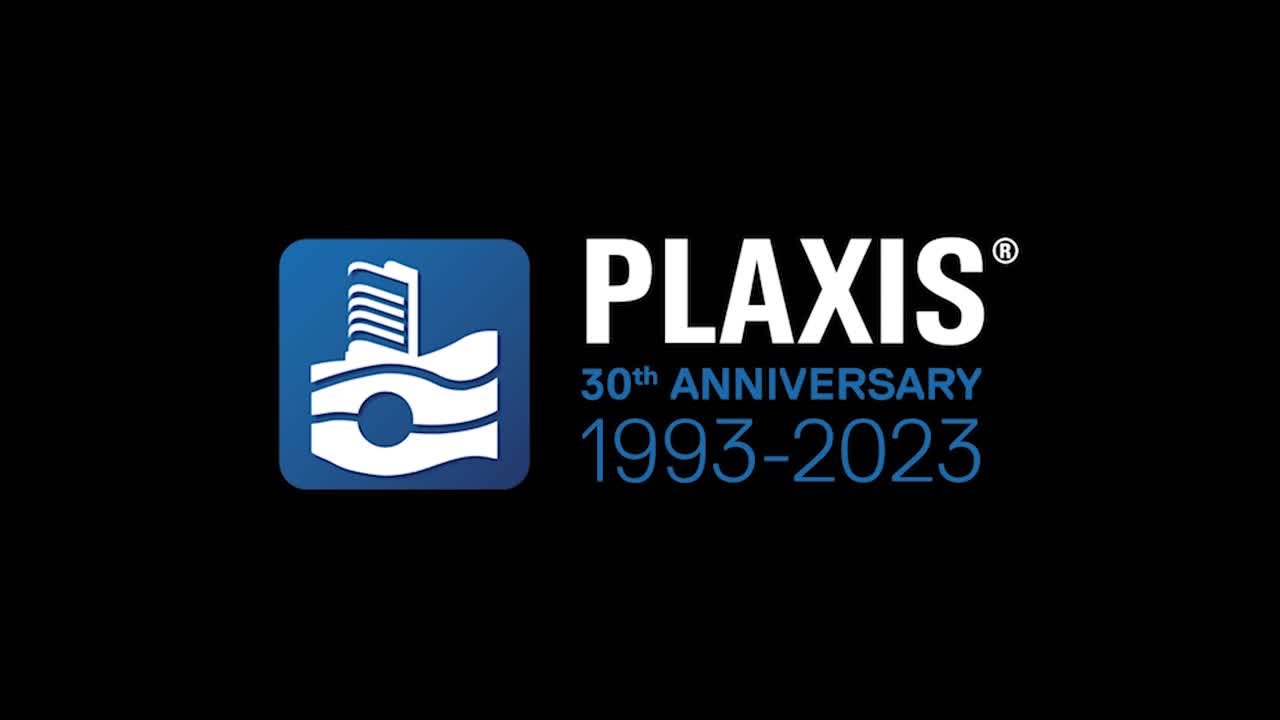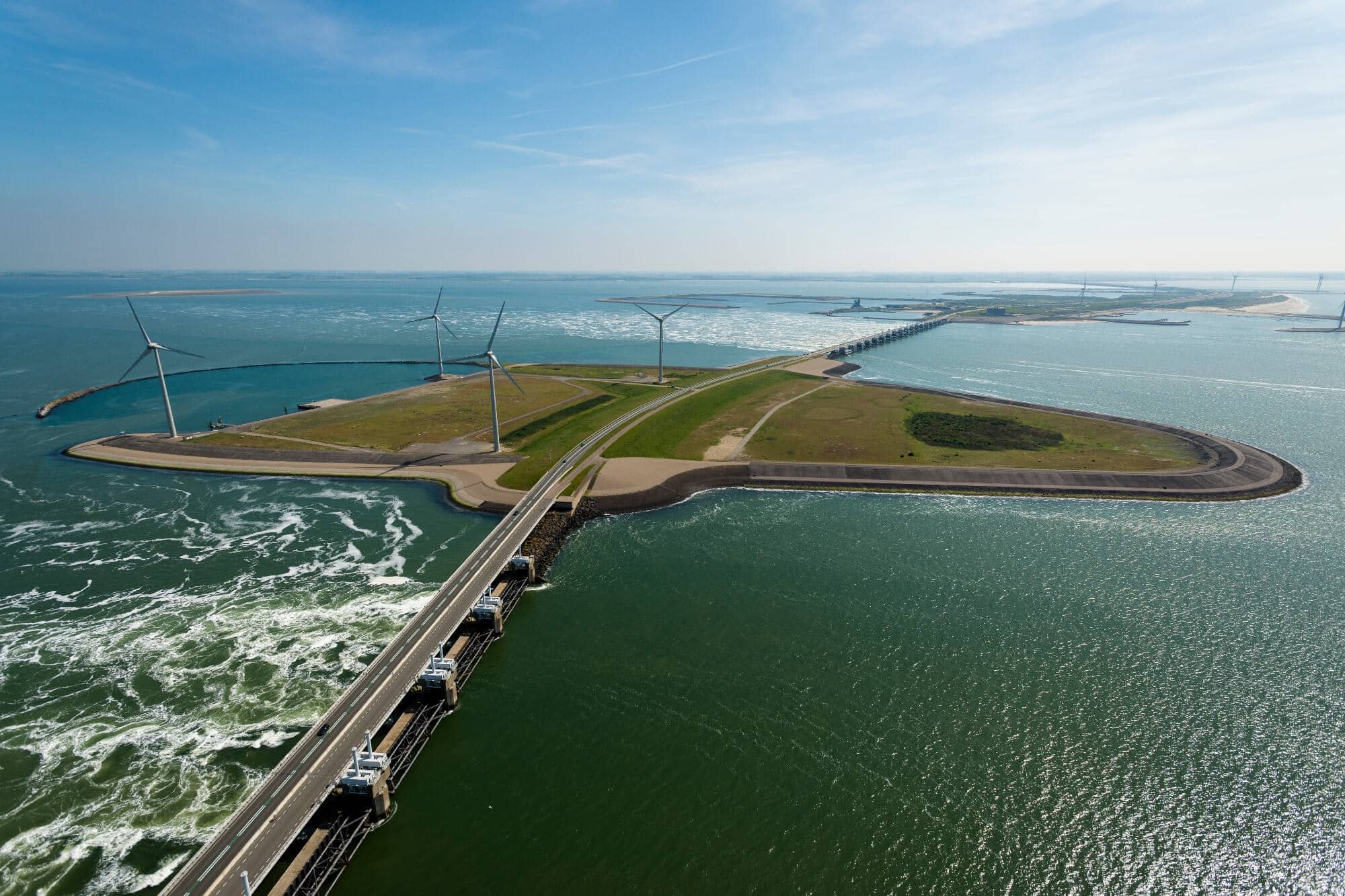Over the last 30 years, PLAXIS innovation has driven the geotechnical analysis industry, enabling engineers to design much of the global infrastructure we use today. However, we don’t want to write only about PLAXIS history without reflecting on the future. Therefore, this article attempts to extract some ideas from the past to continue this success in the future.
Origin of PLAXIS
PLAXIS started as a research project at Delft University of Technology (TU Delft, Netherlands), in collaboration with the Dutch Ministry of Infrastructure and Water Management (Rijkswaterstaat), in the second half of the 1980s. The research combined the finite element method with non-linear constitutive stress-strain models to simulate the behaviour of soil structures in infrastructure projects. At that time, the use and performance of personal computers was booming. This situation allowed the research group in Delft to develop PLAXIS as an advanced and easy-to-use computer program based on state-of-the-art research and robust numerical algorithms such that geotechnical professionals in the engineering practice could use it.
Creating a New Market
At that time, there was no existing market for an advanced computer program like PLAXIS. Conventional calculation methods were used to design geotechnical structures and engineers programmed their simple software to automate hand calculations. However, the group in Delft believed that using advanced numerical methods could provide more accuracy and insight into the complex behaviour of soil structures, leading to better and more economical geotechnical designs. In addition to the software’s development and commercial distribution, they started to train practising engineers, organised a user platform, and provided the necessary background information and support to use the advanced software properly. PLAXIS created a market that did not exist before.
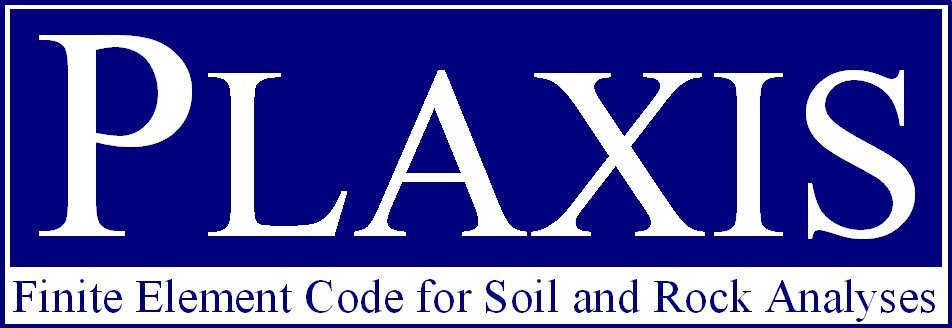
Figure 1: The first commercial PLAXIS logo.
Surviving as a Startup
The commercial activities did not fit in a university environment so, in 1993, a startup company was created. This company “survived” the 1990s with support from Dutch technology innovation funds and a consortium of companies that believed in the advantages that PLAXIS provides. While its existence in the short term was secured, the young company developed a strategy to become successful in the long term, which included:
- Establishing an international network of agents to facilitate worldwide software distribution and provide local training and user support.
- Establishing an international network of academic contacts to provide scientific input for further software development and teach students the necessary backgrounds of the underlying models and methods while helping them become familiar with the software (thereby fostering future demand).
Meanwhile, new PLAXIS versions with new features were released, allowing more complex geotechnical problems to be solved and more projects to be analysed. The new Windows platform helped make the software even more user-friendly and intuitive, which contributed to broader usage. However, technology and user-friendliness alone are not the keys to success. It is the entire concept that started to become successful.
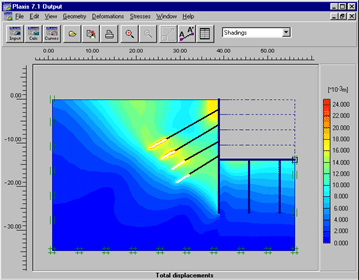
Figure 2: A PLAXIS result view of a retaining structure using version 7.1.
Growth to Success
By 2000, computer hardware had advanced such that 3D numerical modelling and analysis of practical projects on desktop computers became feasible. PLAXIS first developed dedicated, limited 3D programs for tunnels and foundations extracted from its 2D version. Revenues were reinvested to create a completely redesigned full 3D program with a command line interface, which came out by 2010. At that time, the company had transitioned from a small research and development-driven organisation to a professional commercial company that was ready to grow. Still, research and development formed a significant part of the company’s activities, in collaboration with an international network of companies and research institutes. The research and development activities not only involved constitutive modelling and numerical methods, but also software engineering and computer science.
In the following years, the company grew in all aspects. It had become a worldwide success and leader of geotechnical finite element software when it was acquired by Bentley Systems in 2018. Currently, it is part of Seequent, the Bentley Subsurface Company. Being part of the Bentley ecosystem enables PLAXIS to become fully integrated into a multidisciplinary workflow within a cloud-based digital twin environment, while the Seequent ecosystem enables PLAXIS to integrate into a 3D cloud-based subsurface data environment, serving infrastructural projects all over the world during their entire lifetime.
Outstanding Innovator Award
In 2022, PLAXIS was awarded the Outstanding Innovator Award by the International Society for Soil Mechanics and Geotechnical Engineering (ISSMGE). This award recognises the innovation that the PLAXIS team has brought forward ever since its early days, advancing the geotechnical engineering profession.
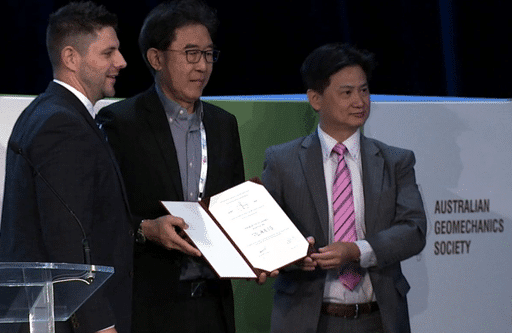
Figure 3: Eddy Tan (centre) Seequent’s Sales and Channel Director Asia receives the Outstanding Innovation award on behalf of the PLAXIS team.
Keys to Success
One of the keys to PLAXIS’s success is how we have made complex subjects easy to use and understand, even when they are not easy at all. Critics have said that PLAXIS made geotechnical finite element analysis too easy, so everybody can make advanced geotechnical analyses, even without understanding the backgrounds and limitations, which can be dangerous. However, the primary purpose is to provide advanced software capabilities for those who understand geotechnical principles. Moreover, PLAXIS is a perfect application to educate students and professionals on various aspects of complex soil behaviour so that they can become experts.
In addition to its extensive geotechnical modelling capabilities, the command-driven application programming interface (API) has also been a key to the success of PLAXIS in the past decade. It is now easy to connect PLAXIS to other software, exchange data, and automate model creation and results processing. The increased popularity of Python as a programming language among many available online libraries makes the possibilities of using PLAXIS in dedicated (automated) applications endless.
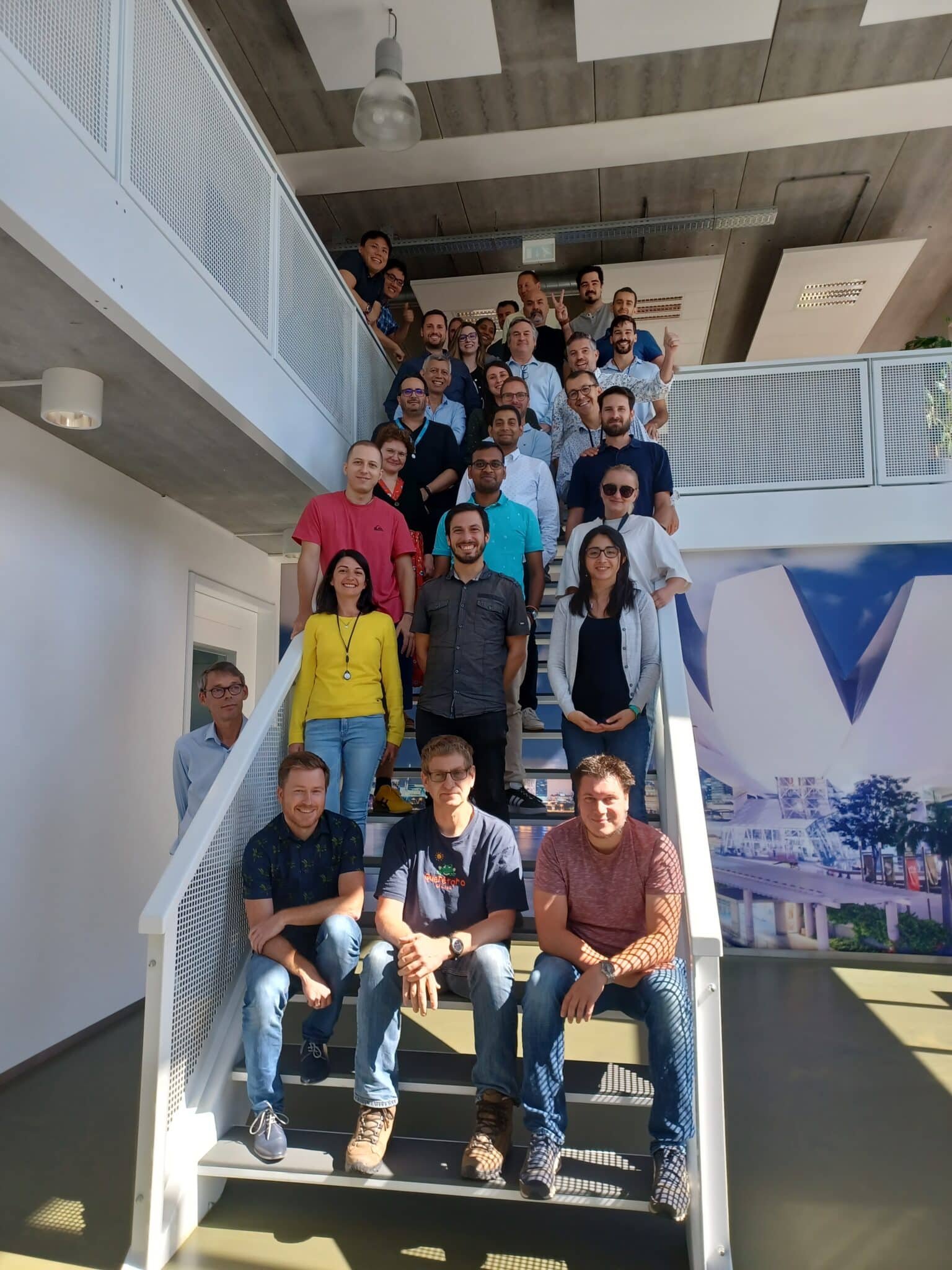
Figure 4. Equally crucial to PLAXIS’ success story – the team behind the scenes
PLAXIS in 2053
As we celebrate 30 remarkable years of PLAXIS, it is not just a moment to reflect on our past achievements. Rather, it is an opportunity to envision what the future may hold. While the future remains shrouded in mystery, we believe that imagination is a powerful force, one that fuels innovation and progress.
At Seequent, our commitment to PLAXIS extends far beyond its illustrious history. We are dedicated to investing in our premier geotechnical analysis brand, driven by a genuine desire to enhance its capabilities and user experience. Our vision for the next 30 years revolves around several key pillars:
- Advancements in Constitutive Modelling and Automated Parameter Determination: Constitutive stress-strain models are central to understanding soil and rock behaviour under varying loading conditions. PLAXIS has always prioritised research in this critical area. These models encompass parameters that quantify diverse aspects of ground behaviour, including non-linear stiffness and strength under different stress, strain, and time conditions. While determining these model parameters from site investigation data remains a significant challenge, our dedicated PLAXIS research team has consistently developed innovative solutions to assist users with parameter determination, calibration, and optimisation. With the increasing use of advanced constitutive models, the development of facilities for parameter determination remains a topic of continuous development.
- Rock Engineering: Recognizing the importance of rock mechanics in geotechnical engineering, we are expanding our capabilities to address the specific challenges posed by rock masses, ensuring that PLAXIS remains a versatile application for a wide range of geotechnical projects.
- Offshore Geotechnical Engineering: As offshore projects become increasingly prevalent, PLAXIS is adapting to meet the unique challenges of offshore geotechnical engineering, ensuring that our software remains a trusted choice for marine infrastructure and energy-related endeavours.
- Seamless Integration with Geological Models: We are actively working on enabling PLAXIS to seamlessly integrate with geological models for both 2D and 3D analysis. This integration will empower geotechnical engineers to tackle complex projects more easily and precisely.
- Data-driven Design: The future of geotechnical engineering will undoubtedly be shaped by data-driven design, harnessing the vast trove of available data and sensor technology. We anticipate a shift towards continuous modelling cycles, increasingly automated through digital twin technology, with PLAXIS playing a pivotal role in facilitating this transformative journey in the coming decades.
- Cloud Computing: Embracing the power of cloud computing, we are working towards providing PLAXIS users with enhanced scalability and accessibility, enabling them to perform complex analyses more efficiently, regardless of their location.
- Continuing Success Factors: Building on our past successes, we are committed to maintaining key principles that have contributed to our growth, including:
- Focusing on practical workflows with real-world applications and challenges.
- Collaborating with esteemed research institutes to stay at the forefront of innovation.
- Partnering with industry-leading companies to ensure practical application and relevance.
- Providing comprehensive training and support not only on software usage, but also on the underlying theoretical foundations.
- Investing in innovation and developing cutting-edge ideas, exploring how concepts like machine learning can benefit geotechnical engineering and design.
In essence, the future of PLAXIS is bright and dynamic, and we look forward to embarking on this exciting journey with our users and partners. Together, we will continue to shape the landscape of geotechnical engineering, pushing the boundaries of what’s possible. The next 30 years promise innovation, collaboration, and a steadfast commitment to advancing the field we hold dear.
Conclusion
PLAXIS has evolved from a research project at TU Delft to a prosperous, world-renowned software product that has become the standard in geotechnical analysis and design. The success of PLAXIS is not just based on the software product but rather on the entire concept around it. Being part of the Bentley ecosystem provides new opportunities for an integrated multidisciplinary workflow within a cloud-based digital twin environment, while the Seequent ecosystem enables integration in a 3D cloud-based subsurface data environment. Lessons from the past can be used to continue future success.
